Glacier Rope Set-up
Because ski mountaineering is so varied, there is no one single “best rope” out there that covers all the bases. Sometimes you want a short, light, skinny rope just in case, and other times you need a full length, beefy multi-fall lead line. In the past I’ve carried a variety of 60m ropes based on what I thought the worst case scenario might be. If there was a chance of having to lead vertical water ice, I’d bring a 9.8mm lead line. If it was mainly a glacier trip, I’d bring a skinny 7.8mm rope. There were two problems with this set-up; the first was that if you misjudged the terrain, you were lead climbing on a skinny rope (yikes!) or dragging a huge rope on mellow terrain. The second was that you were always coiling/uncoiling and carrying generally more rope than you needed. 30m ropes are great for ski mountaineering, except when you need 50m.
On our recent trip to Antarctica I ended up bringing two 30m ropes of different diameters and was very psyched on the flexibility of the system. Glacier travel with 4-5 people on a 30m rope makes for some tight spacing, but then again, it depends on the terrain. Antarctica had lots of crevasses, but they weren’t the Mack Truck swallowing monsters that you can get up in Alaska, so the tighter spacing meant better communications and less rope work. We used the Sterling 9.2mm Fusion Nano most of the time and swapped out carrying the lighter 7.8mm Sterling Fusion Photon as needed.
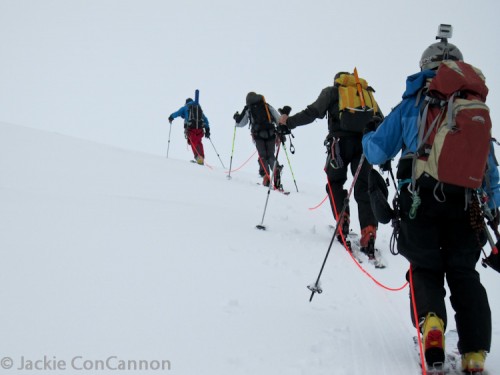
Five people on a 30m rope is tight spacing, but it worked for this type of terrain. Either the leader or tail gunner can carry the second rope.
For skiing, it’s nice to have two ropes as the first and last person can both carry one. It doesn’t matter how long or strong a rope is if the person carrying it falls to the bottom of a crevasse with it. Some people carry 5.5mm Spectra rope as a “drop cord”, but these ropes are so specialized they can’t be used for much else. By carrying two dynamic 30m ropes of different diameters, you can tie them together if you need to extend spacing on a glacier, or for a full 30m rappel.
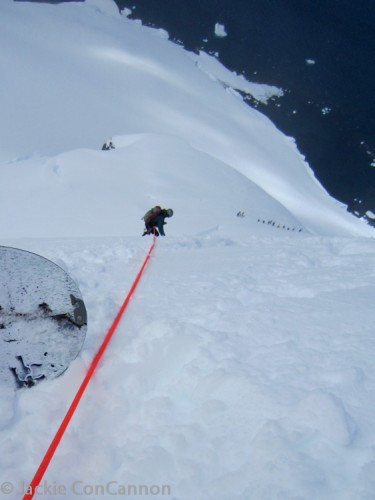
Roped skiing on a 9.8mm 30m rope. In this case, we had to add the second 30m rope to extend the total distance to 60m.
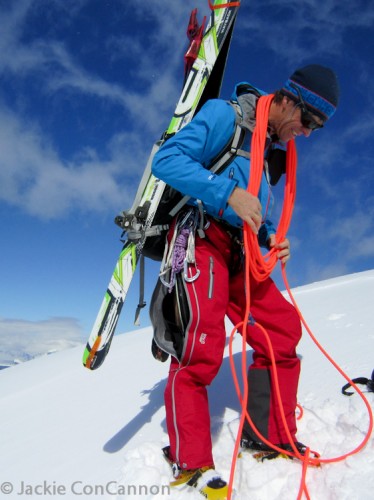
Ropes only work if you use them, and not having to deal with an entire 60m at a whack makes that much easier. Coiling a 30 on top of a peak.
Another nice feature of carrying two 30m ropes is that you can upsize or downsize depending on the terrain. Or, if you get to an area where you are just carrying a rope as insurance, you can leave the heavier rope at the bottom and pick it up on the way back down.
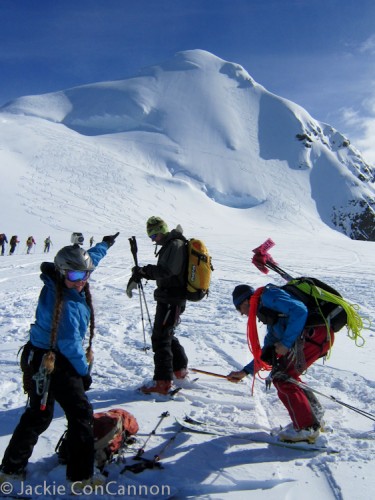
In cases like this, you can leave one rope at the base (where this photo was taken), then use the lighter rope to cross the glacier to get to steeper terrain.
The disadvantage of this system is that it is harder to do a full 60m rappel on a single line as you have to pass a knot, and, you can’t do a 60m protected lead unless you are willing to run out the first 30m before your first piece. But, these seem like a small price to pay for the vast increase in flexibility, reduction in weight and simplicity of dealing with a smaller amount of rope every time you tie in.
________________________________
Help support StraightChuter.com and tie into a Sterling Fusion Nano AT Dry Rope – 9.2mm from Backcountry.com. Click on the photo below…
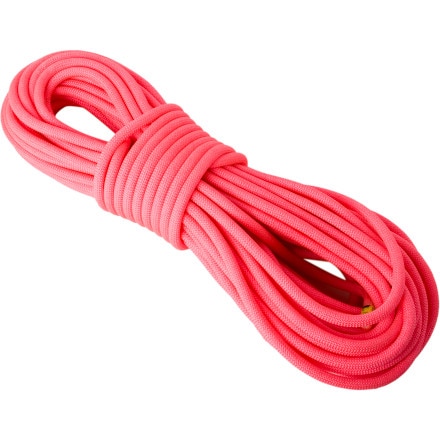
Category: Gear Reviews









Brilliant. I totally agree on the 2 short ropes. Have you considered just buying one 8 mil half rope and cutting it in half? It would be even lighter than the setup you mentioned with the same flexibility and when you were leading a difficult(albeit short 30m) pitch you could just tie into both ropes (great for wondering pitches too). This way you don’t really need the fat cord at all plus you don’t have to buy two ropes and take a knife to both so its cheaper too.
Bobski – I’ve cut a 9.2mm Joker in half once (ouch) and although it works, I like the flexibility of having two different diameters. An 8 mil would be dicey as a lead rope, but a 9.2 is fine for snow or glaciers. Both of these ropes came as 30m cords, so I didn’t have to cut full-length ones down. A few companies are selling these 30m lengths as “rando” or “AT” ropes.
Thanks for the post Andrew. I have a Beal 8mm, 30m cord and was contemplating on getting another to increase the length of rappels. But why buy a duplicate of the exact same rope? This systems seems to make good sense to me.
Knot of choice to connect two dissimmilar diamter ropes? Double fishermans seems best in my mind. Thoughts?
who is that hot splitboarder in your group? is she married?
Andrew,
It seems like every time I rope up with someone different they have a different crevasse rescue system. What system do you know/practice or do you just improvise and adjust to the crevasse situation and assume your partners will too? Thanks for your advice.
Josh
I love 8-9mm 30m on my back!
Re: tight spacing on 30m. Assuming you are going with 2x30m ropes, why not just have center skier tie in to end of both ropes, and lead and tail coil extra? Then either end has extra if needed and plenty of spacing.
I interpreted Bobski’s point as leading using 2x8mm ropes as twin or halfs vs. a not-rated single.
Recognizing you were probally not serious, I am knot (pun) sure I get how running out the 1st 30m works for tying two 30m ropes together (the knot is going to hit belay + ‘biners from 30-60m).
Hi Aaron – no, I was talking about roping up with five people on a single 30m rope, which I know would never meet AMGA approval. Again, it totally depends on the terrain, and in this case, you use all of the rope without any tip/tail lengths.
I was kind of serious about running out a 30m pitch. People solo ice all the time, which is something you might find in ski mountaineering – a moderate ice pitch that it would be prudent to rope up for. By using two 30m ropes tied together, you’d have a knot at 30m that would jam on any carabiner/pro, you to get the full 60m, you’d have to go 30m before your first piece.
Hi JCoates – I use and practice a conventional Z-drag set up for crevasse rescue. Nothing fancy, and in that regard, I don’t carry extra belay devices, pulleys, etc..
The hot splitter enjoys long walks on crevassed glaciers, quite evenings in front of a topo map, steep couloirs and leaping over cracking snowbridges. I’ll pass your name along to her and see if she is available.
Hi Mike – I may not have been clear, but I use one 30m x 9.2mm rope and one 30m x 7.8mm. The knot of choice would depend on the use. I like a regular overhand for rappeling, although I admit it is scary to look at. For two ropes on a glacier, I’d tie Figure 8’s in the ends and clip both ends to the person in the middle. For tying them together to lead on..? Hmmmm. I’m sure that is highly unrecommended by most responsible people, but I’d probably use a Double Fisherman’s.